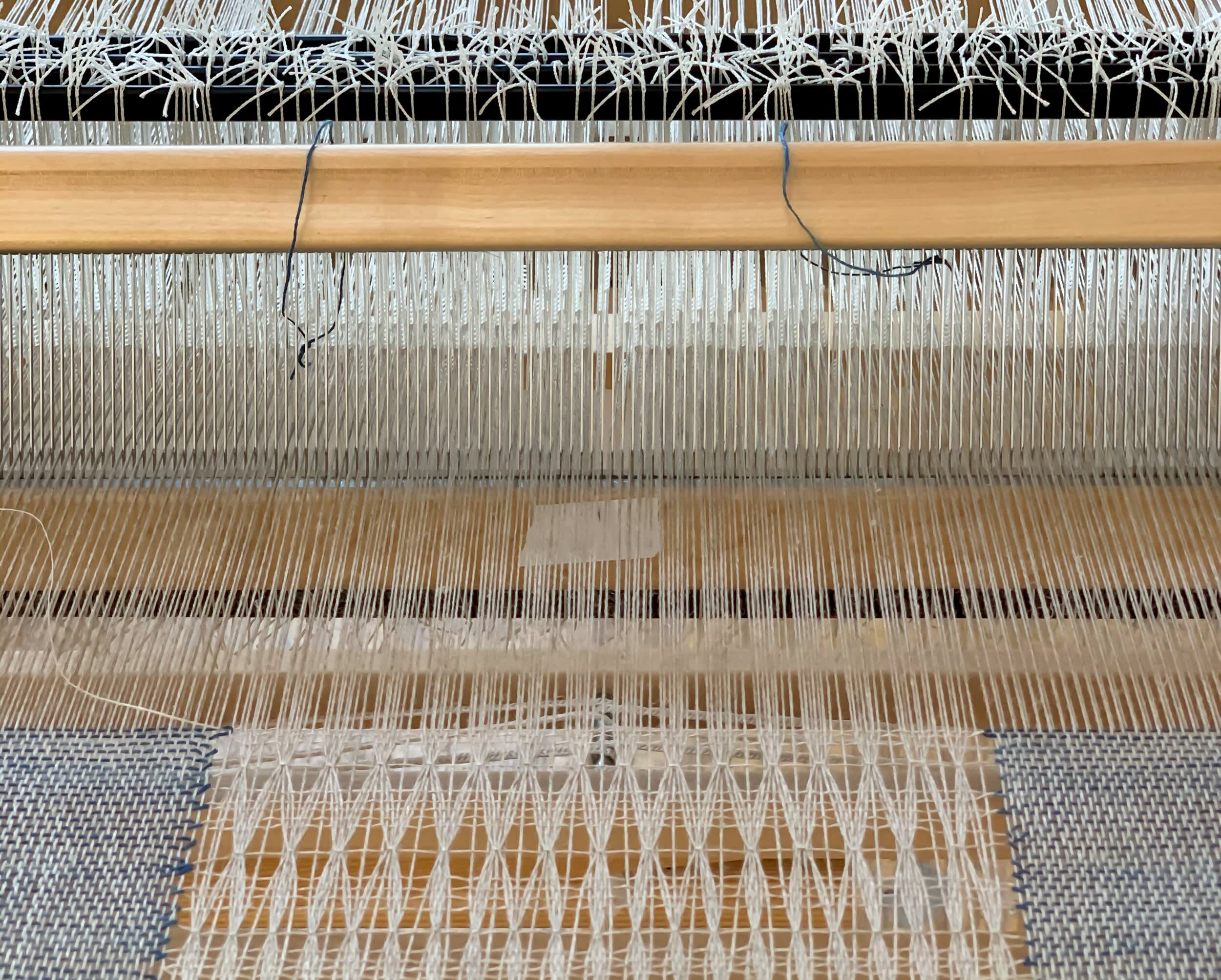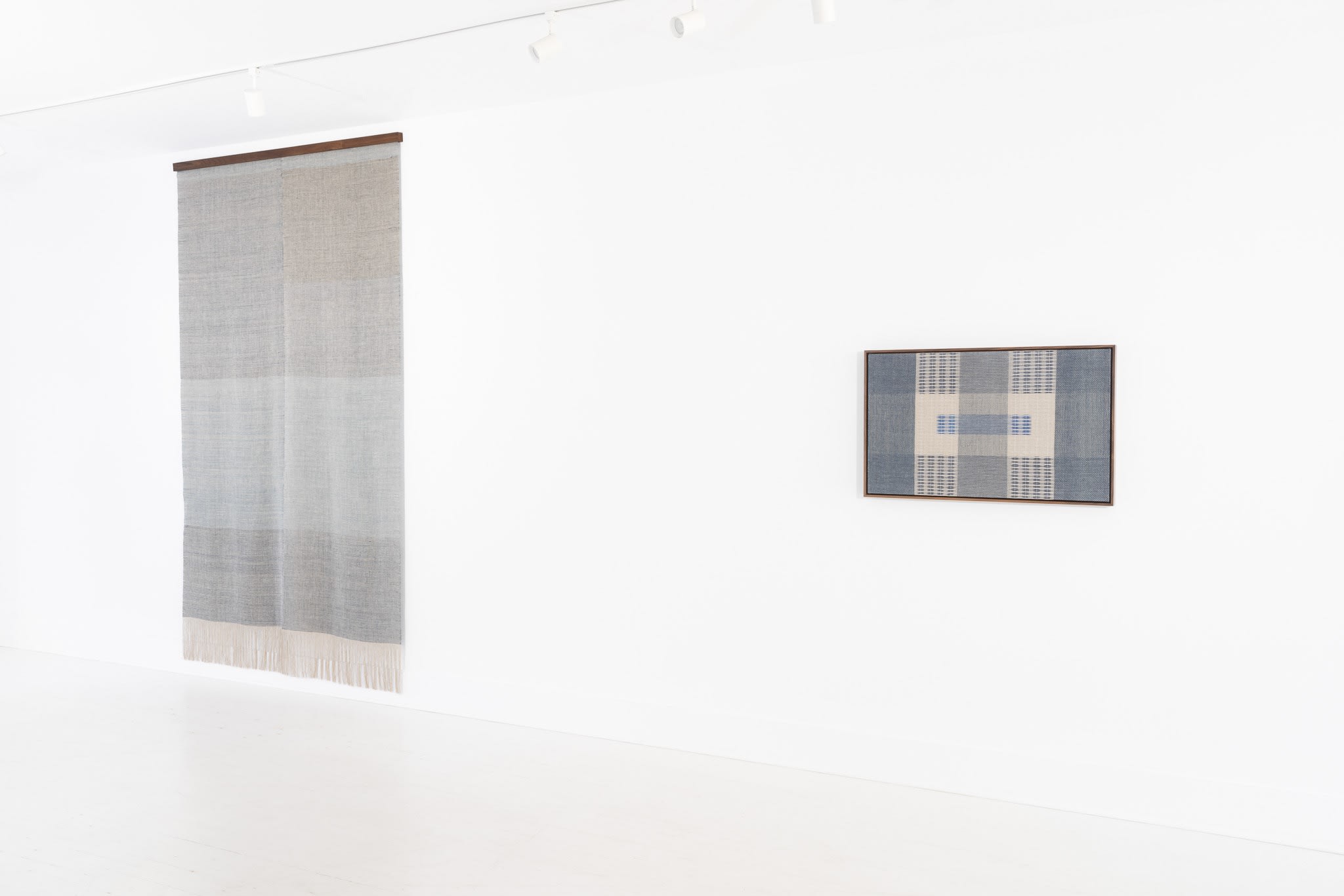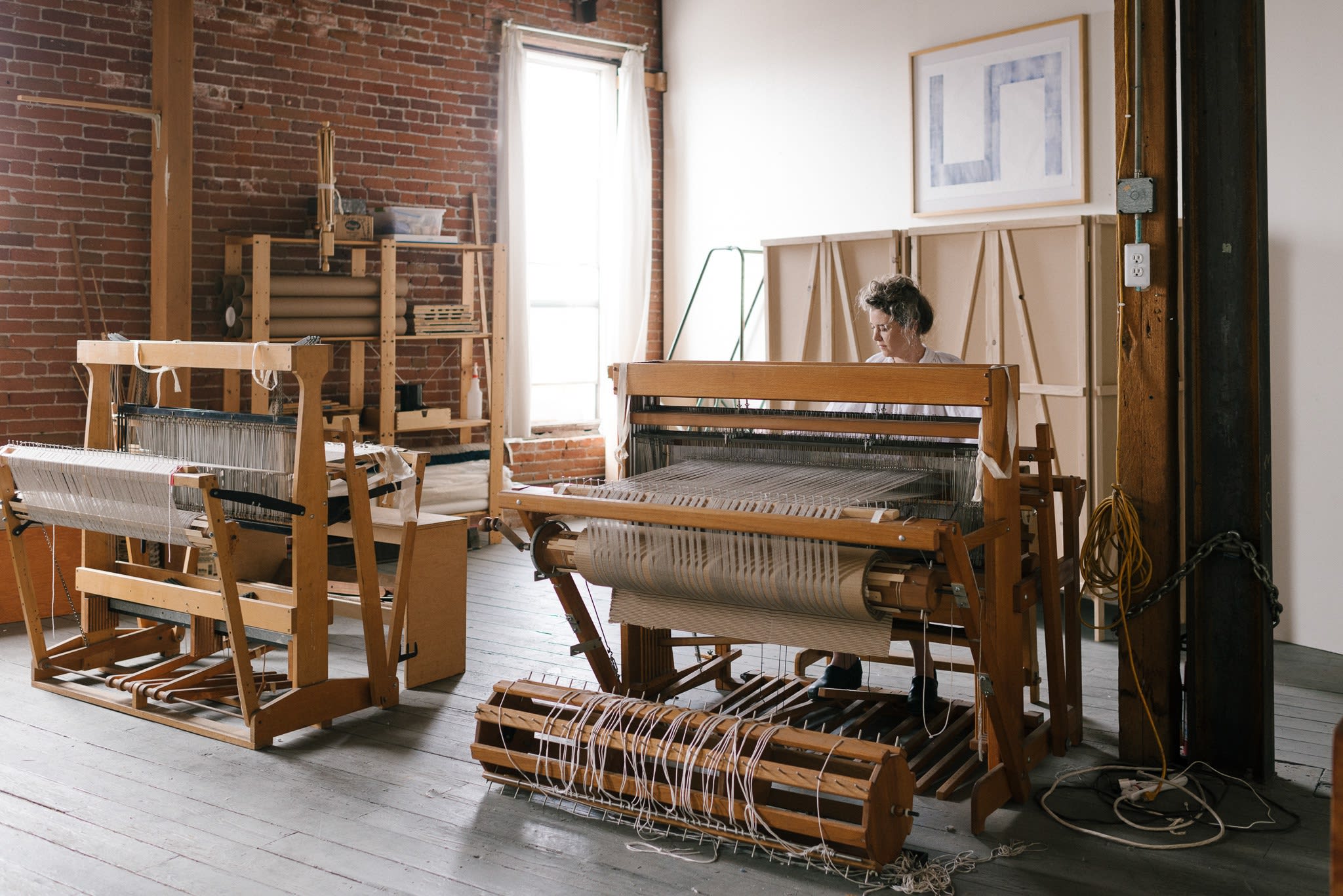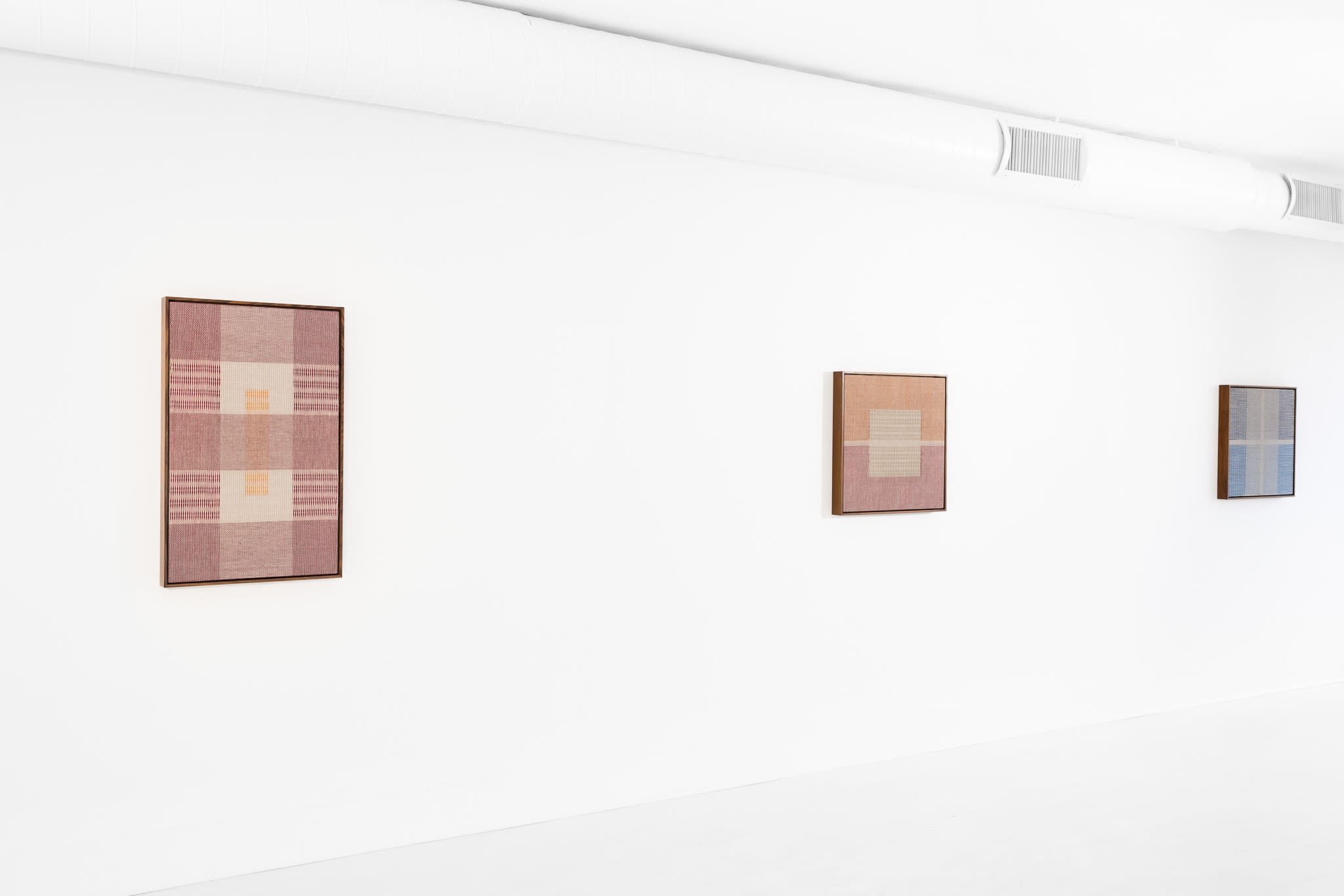At the heart of Rachel DuVall’s weaving technique is a meticulous layering of hand-woven linen cloth with natural dyes over painted linen. The result is a mesmerizing series of wall hangings that beckon viewers into a realm of contemplative intricacy.
We had the chance to catch up with Rachel for a brief Q&A to discuss her artistic practice and latest body of work, on display in ARDEN + WHITE’s Windows exhibition through December 2nd.
“My hope is that my work can be more of a whisper than a yell, something that you can come back to and experience anew.” - DuVall
A+W: Do you draw inspiration from any external iconography or historical artistic contexts? If so, where?
RD: Weaving is one of the oldest crafts in history, dating back to at least 12,000 years ago during the Neolithic era. Every culture has added its own artistic vision and practical application to the creation of its textiles, and I’m continually inspired by the many traditions of weaving found throughout the world. I’m also very interested in geometric abstraction, and minimalist and post-minimalist artists such as Ad Reinhardt, Mark Rothko, Donald Judd, Josef and Anni Albers, and Ann Truit.

A+W: What motivated your decision to specialize in Fiber at the Maryland Institute College of Art?
RD: I started out at school in general fine arts, drawing, and painting, but really enjoyed all of the new processes I learned in the fiber department. I loved the materials and tactile nature of combining different threads, dyeing, and sewing. Once I took a class on the floor loom I was hooked, and within the year, my small apartment was taken over by a huge 12-shaft floor loom.
A+W: What would you say is the harder part of your process the conception of the work or the execution of it?
RD:Neither is easy, but I would say the execution. Weaving is a very time-consuming process that involves a lot of attention to detail, measuring threads, lining things up perfectly on the loom. Although the act of weaving can be very meditative, there is a lot of exacting and labor-intensive work before you get there.


A+W: What motivated you to work with natural dyes in the first place? What are the upsides, and are there pitfalls?
RD: I love the color palette available in natural dyes; they all work harmoniously. When I dye the material myself, I get to adjust the dye lots and really experiment.

A+W: Could you elaborate on the role of negative space in your work and how it contributes to the overall aesthetic?
RD: Through my work, I like to take a minimal amount of colors and patterns to create variation by layering and optical mixing, the negative space of plain undyed or unpainted linen doing just as much work as the more complicated weave structures or dyed yarns.
A+W: Are there specific emotions or ideas you aim to evoke or convey through your art or each individual series, particularly in the context of the interplay between weaving and painting?
RD: I hope to convey a sense of calmness in my work. I aim to make a cohesive whole when you stand back, but you can come closer and really get lost in the detail of the pattern, the variation of the natural dye, the layering. I think we all can feel overwhelmed by the attention economy and my hope is that my work can be more of a whisper than a yell, something that you can come back to and experience anew.

Windows will run through December 2, 2023.
For information on available works, email gallery@ardenandwhitegallery.com


